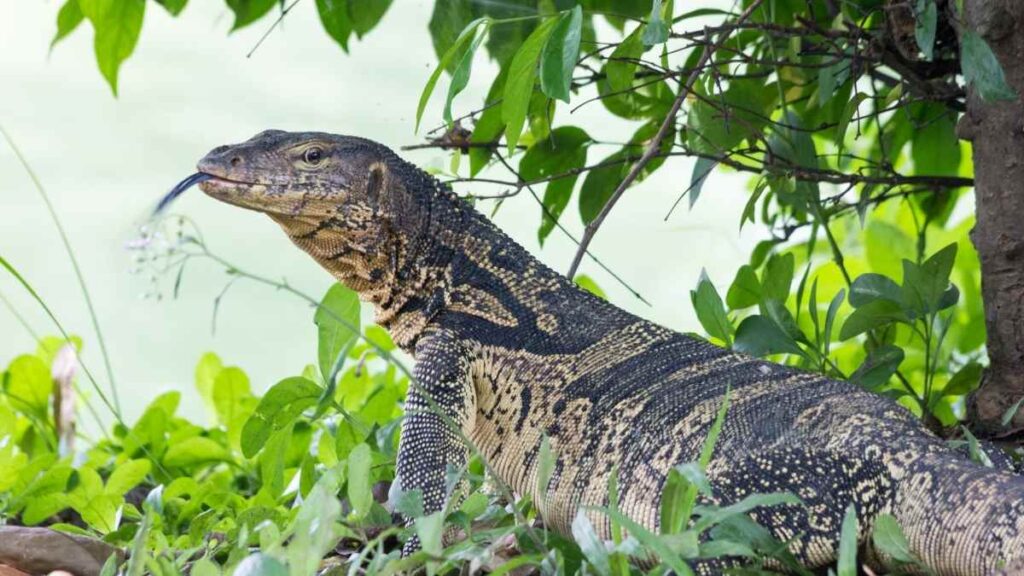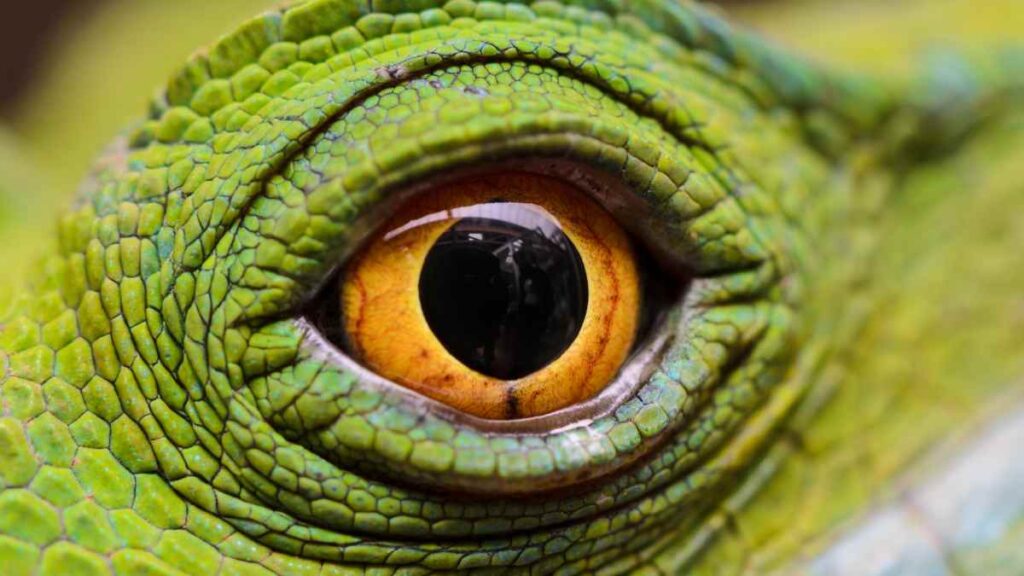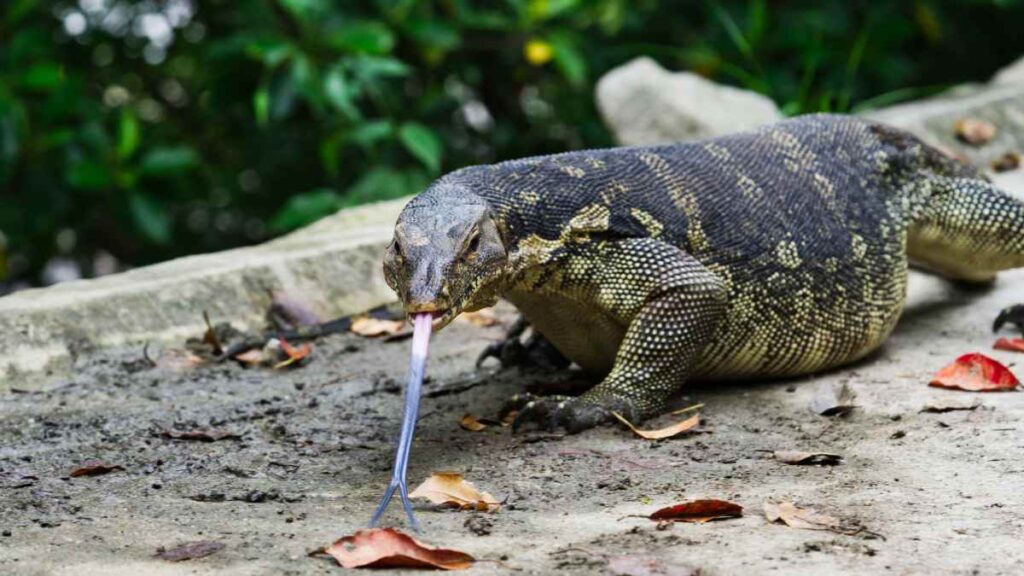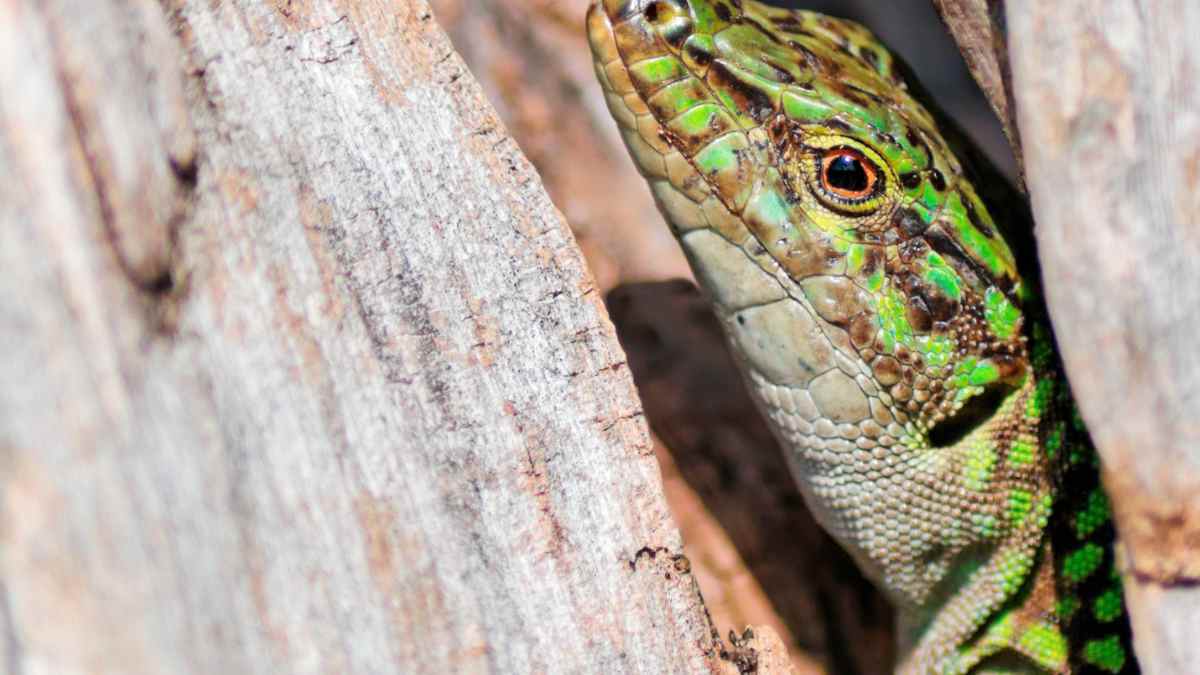Lizards may not have the sharpest vision or the most advanced hearing, but they have unique senses that allow them to navigate and survive in their environments.
From sticky tongues to sensitive skin, lizards have many tools to sense their surroundings.
But how do these scaly creatures use their senses to hunt for food, avoid predators, and communicate with each other? And what weird and wonderful adaptations have lizards evolved to help them make sense of the world around them?
Join us as we explore the fascinating world of lizard senses and discover how these reptiles perceive and interact with their environment.
From the eyes that allow them to spot prey from a distance to the tongues that help them communicate through scent, lizards have a range of impressive abilities that will enable them to thrive in the wild.
So get ready to discover the fantastic ways lizards sense their surroundings!
Lizards – What Are They?

Lizards are a diverse group of reptiles found worldwide, from deserts to rainforests to your backyard. These scaly creatures come in various shapes and sizes, from the giant Komodo dragon to the tiny chameleon.
But lizards aren’t just fascinating to look at – they play essential roles in the ecosystem. Many species of lizards are predators, helping to control populations of insects and other small animals.
-

Beaded Dragon Fan Exclusive: ‘Original Hipster’ T-Shirt – Wear Your Unique Style with Pride – Unisex t-shirt
£13.00 – £20.50 Select options This product has multiple variants. The options may be chosen on the product page -

Chinese Water Dragon Aquatic Mastery Tee: Dive into Elegance with Our Exclusive Reptile Enthusiast Shirt – Unisex t-shirt
£13.00 – £20.50 Select options This product has multiple variants. The options may be chosen on the product page
Lizards are also an important food source for other animals, such as birds of prey.
In addition to their ecological importance, lizards have long fascinated humans. From ancient myths and legends to modern-day pet ownership, these fascinating reptiles have a special place in human culture.
Types of sensory organs in lizards

When it comes to sensing their surroundings, lizards have a range of specialized organs at their disposal.
Let’s take a closer look at some of the most interesting and unique sensory organs in these scaly creatures.
- Eyes: Lizards have eyes similar to those of humans, with pupils that can dilate and contract to adjust to different levels of light. Some species, such as chameleons, can move their eyes independently of each other, allowing them to scan their surroundings in 360 degrees.
- Ears: While lizards may not have visible ears as humans, they still can hear. Many species have small openings on the sides of their head that function as ears, and some even have a tympanic membrane (eardrum) that helps them detect vibrations in the air.
- Nose: Lizards have a keen sense of smell, which they use to detect predators, locate food, and communicate with each other. Some species even have a unique organ on the roof of their mouth called the Jacobson’s organ, which helps them pick up on subtle scents in the air.
- Tongue: Lizards use long, sticky tongues to capture insects and small prey. But their tongues also serve a secondary purpose – they are coated in scent glands that allow lizards to communicate with other members of their species through smell.
- Skin: Lizards have sensitive skin that helps them detect changes in their environment, such as the presence of predators or prey. Some species, such as geckos, have special toe pads covered in millions of hairy structures that allow them to stick to surfaces and climb trees easily.
So next time you see a lizard, remember that these creatures are equipped with sophisticated sensory organs to make sense of the world around them.
How lizards use their senses in different environments

Lizards use a range of senses to navigate and survive in their environments. But how do these scaly creatures put their senses to use in different environments?
Let’s take a closer look at how lizards use their eyes, ears, nose, tongue, and skin to make sense of their surroundings.
- Sight: Lizards rely on their eyesight for various purposes, including hunting for food and avoiding predators. Some species, such as chameleons, have excellent vision and can spot small prey from a distance. Others, such as horned lizards, have eyes on the top of their head, allowing them to look for predators while basking in the sun.
- Hearing: While lizards may not have ears that are as advanced as those of mammals, they still can hear. Many species use their hearing to detect the presence of predators or potential prey, and some even use vocalizations to communicate with other species members.
- Smell: Lizards have a keen sense of smell that they use to locate food and detect the presence of predators or potential mates. Some species, such as chameleons, even have a unique organ on the roof of their mouth called the Jacobson’s organ that helps them pick up on subtle scents in the air.
- Taste: Lizards use their tongues and taste buds to detect and identify food. Some species, such as chameleons, have particularly sensitive taste buds that allow them to distinguish between different types of prey.
- Touch: Lizards have sensitive skin that helps them detect changes in their environment, such as the presence of predators or obstacles. Some species, such as geckos, have special toe pads covered in millions of hairy structures that allow them to easily stick to surfaces and climb trees.
What is a lizard’s best sense?
When it comes to sensing their surroundings, lizards have a range of specialized organs at their disposal. But if we had to pick just one, we’d have to say that a lizard’s best sense is… drumroll please… its tongue!
Lizards use long, sticky tongues to capture insects and other small prey. But their tongues also serve a secondary purpose – they are coated in scent glands that allow lizards to communicate with other members of their species through smell. Some species of lizards can even detect the presence of potential mates or predators using their sense of smell alone. Then they can go on the defensive straight away!
But that’s not all – lizards also have excellent eyesight and a keen sense of hearing, which they use to detect the presence of prey and avoid predators. And with sensitive skin and a sharp sense of taste, lizards are equipped with a range of impressive senses that allow them to thrive in the wild.
So while choosing just one is tough, we’d have to say that a lizard’s tongue is its best sense. It’s a multi-purpose organ that helps these scaly creatures find food, communicate with each other, and navigate their environment. And that’s something to stick your tongue out at!
Conclusion
There you have it, an overview of how lizards sense their surroundings!
Lizards may not be the first animals that come to mind when you think about sensory perception, but these scaly creatures are equipped with a range of specialized organs that allow them to make sense of the world around them.
From their sticky tongues to their sensitive skin, lizards have many tools to navigate and survive in their environments.
So the next time you see a lizard basking in the sun or darting through the underbrush, take a moment to appreciate the unique ways these creatures use their senses.
Whether they’re using their eyes to spot prey from a distance or their noses to detect predators, lizards are indeed masters of their environments.

